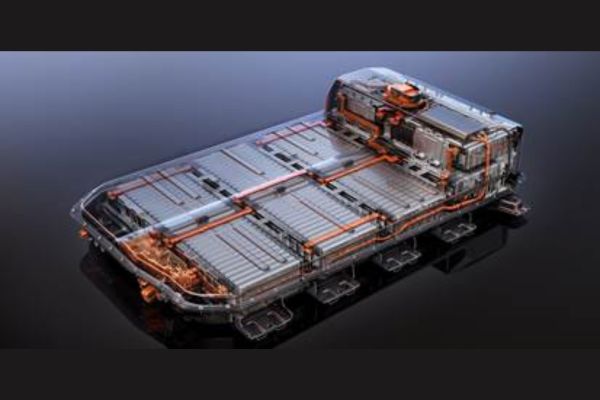The global automotive industry is experiencing a monumental shift towards sustainable transportation, with electric vehicles (EVs) leading the charge. A key component enabling this transition is the Electric Vehicle Battery, which is poised for significant growth in the coming years. Anticipated advancements in battery technology, coupled with supportive government policies and increasing consumer demand, are driving this market towards a projected valuation of US$ 365.4 billion by 2031.
Rise of Lithium-Ion Batteries
The breakthrough for EV batteries came with the commercialization of lithium-ion (Li-ion) batteries in the 1990s. Li-ion batteries offered significant advantages over lead-acid batteries, including higher energy density, lighter weight, and longer lifespan. These characteristics made them ideal for powering electric vehicles, enabling longer driving ranges and faster charging times.
Companies like Tesla played a crucial role in popularizing EVs with their use of high-capacity Li-ion battery packs in vehicles like the Tesla Roadster and Model S. As demand for EVs grew, so did the investment in battery technology, leading to continuous improvements in performance and cost reduction.
Environmental Benefits
The widespread adoption of electric vehicles powered by clean energy sources offers significant environmental benefits:
- Reduced Emissions: EVs produce zero tailpipe emissions, reducing air pollution in urban areas and mitigating greenhouse gas emissions from the transportation sector.
- Energy Efficiency: Electric drivetrains are more energy-efficient than internal combustion engines, especially when coupled with renewable energy sources like solar and wind.
- Grid Integration: Smart charging technologies and vehicle-to-grid (V2G) systems enable EVs to support grid stability and enhance renewable energy integration, creating a more resilient and sustainable energy ecosystem.
- Lifecycle Impact: Continued research into sustainable battery materials and recycling technologies is improving the overall lifecycle environmental impact of electric vehicles, making them even more environmentally friendly.
Key Market Insights
- The lithium-ion battery segment is expected to dominate the market, reflecting 65.8% market share in 2023.
- Light commercial vehicles are projected to witness impressive growth with a CAGR of 20.4%, indicating strong commercial interest in electrifying fleets.
- China stands out with a significant CAGR of 18.8%, highlighting its pivotal role in driving global EV battery demand.
Market Trends Driving Growth
- Declining Battery Costs: The substantial decrease in battery pack costs, particularly in lithium-ion technology, is a major catalyst for EV adoption and market growth.
- E-Mobility Integration: Integrated charging stations, green power initiatives, and strategic collaborations among stakeholders are enhancing market viability and consumer confidence in EVs.
- Technological Advancements: Ongoing innovations in battery technology and propulsion systems are ensuring superior performance and driving range, crucial for mainstream EV adoption.
Regional Market Analysis
- North America: Leading with over 38% market share by 2031, North America benefits from established EV manufacturers and a competitive landscape driving innovation.
- Asia Pacific: Projected to grow at a CAGR of 19.1%, Asia Pacific’s burgeoning automotive sector and urbanization trends are propelling EV battery demand.
Prominent Market Players Key players such as CATL, Samsung SDI, Panasonic, and LG Chem are driving market innovations and investments. Notable developments include Samsung SDI’s substantial investment in a new battery plant in Malaysia and CATL’s strategic stake acquisition in Northvolt, showcasing market dynamism and strategic foresight.
Advancements in Battery Technology
The evolution of electric vehicle batteries has been marked by continuous advancements in key areas:
- Energy Density: Increasing the energy density of batteries allows for longer driving ranges on a single charge. Researchers and manufacturers have made significant progress in developing high-energy-density battery chemistries, such as lithium-sulfur and solid-state batteries.
- Fast Charging: Reducing charging times is critical for improving the convenience of EVs. New electrode materials, charging algorithms, and infrastructure improvements have enabled faster charging without compromising battery lifespan.
- Cost Reduction: Initially, the high cost of battery production was a significant barrier to EV adoption. Economies of scale, technological innovations, and government incentives have driven down battery costs significantly, making EVs more affordable for consumers.
- Lifecycle and Sustainability: Improving the lifespan and recyclability of batteries is essential for reducing environmental impact. Recycling programs for lithium-ion batteries are becoming more widespread, recovering valuable materials like lithium, cobalt, and nickel for reuse in new batteries.
Key Market Segments The market is segmented by battery type, material type, propulsion, process, capacity, form, and vehicle type, reflecting diverse industry needs and technological advancements.















